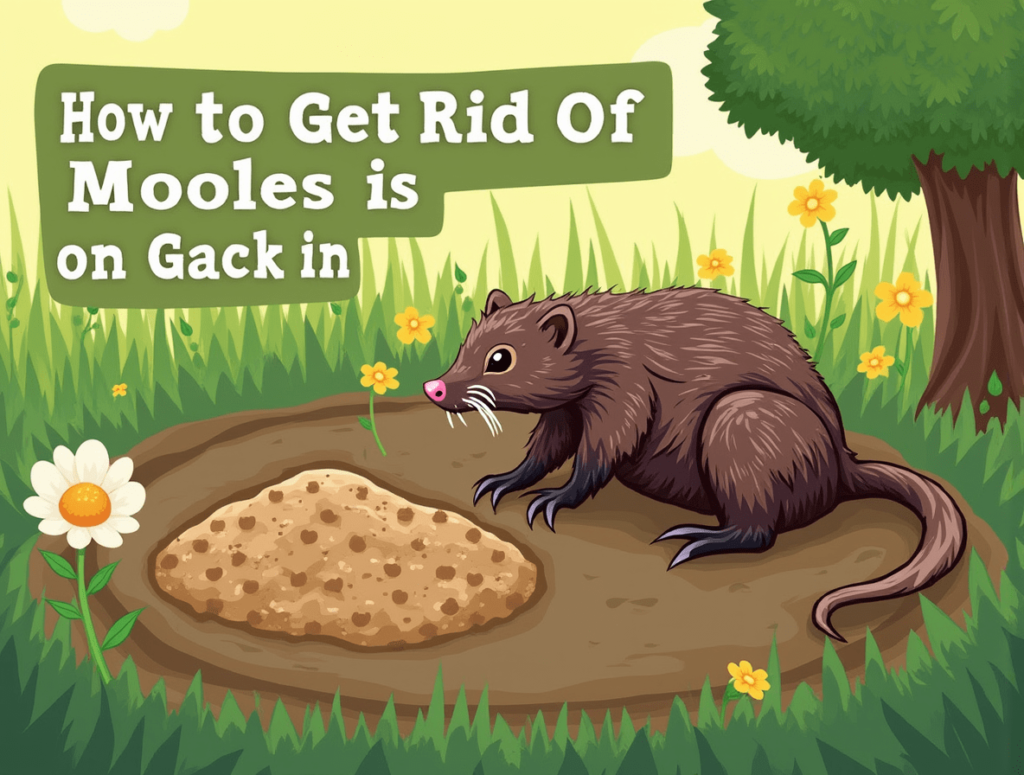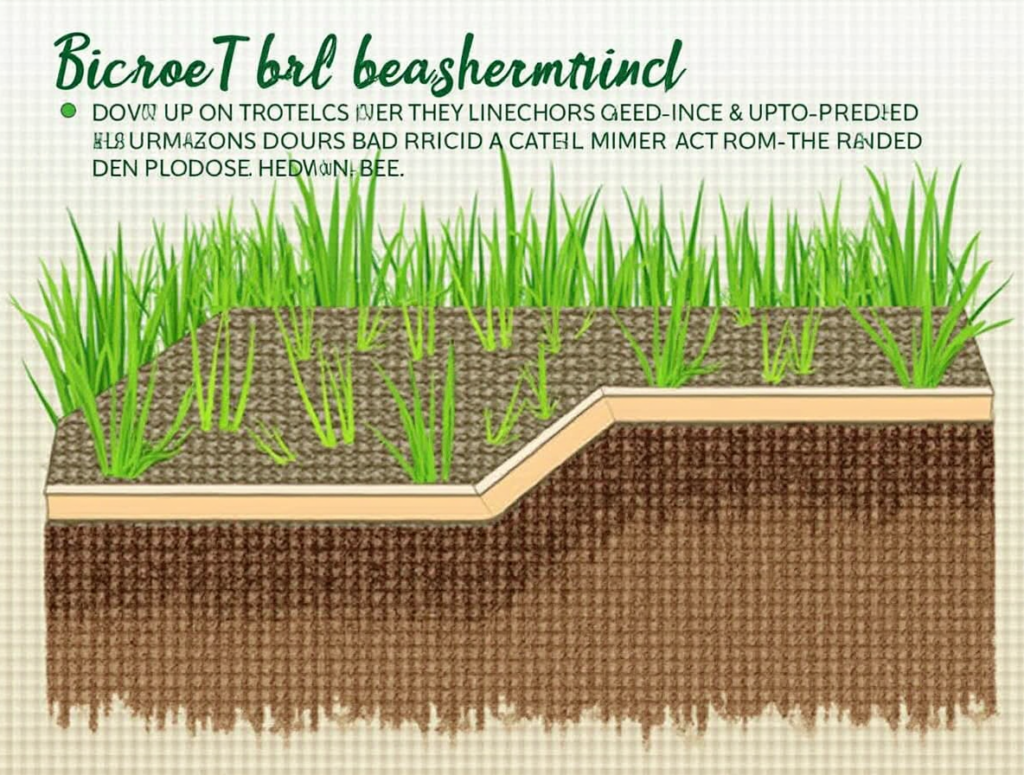Are you tired of finding tunnels snaking through your lawn and garden beds ruined overnight? If so, you’re likely dealing with moles in your garden. These subterranean creatures can cause significant damage to your carefully tended landscape. In this comprehensive guide, I’ll share effective strategies to identify, prevent, and eliminate mole problems while keeping your garden healthy and beautiful.
Understanding Your Underground Invaders
Before diving into removal methods, it’s important to understand what you’re dealing with. Moles are small mammals that spend most of their lives underground, creating extensive tunnel systems as they search for food. Despite their size (typically 4-7 inches long), they can cause disproportionate damage to gardens.
Did you know? A single mole can create up to 150 feet of new tunnels in just one day!
Signs You Have Moles in Your Garden
- Molehills: Small, volcano-shaped mounds of soil scattered across your lawn
- Surface tunnels: Raised ridges running along the ground surface
- Damaged plants: Plants that suddenly wilt or die due to root damage
- Spongy soil: Areas that feel soft underfoot due to tunneling beneath
Why Moles Invade Your Garden
Understanding what attracts moles to your garden can help you address the root cause:
| Mole Attractants | Why They’re Problematic |
|---|---|
| Grubs and insects | Primary food source for moles |
| Loose, moist soil | Makes tunneling easier |
| Earthworms | A mole favorite food |
| Overwatered lawns | Creates ideal conditions for moles and their prey |
10 Effective Ways to Get Rid of Moles in Garden
1. Eliminate Their Food Source
Treating your lawn for grubs and insects can make your garden less appealing to moles. Consider using beneficial nematodes, which naturally control soil-dwelling pests without harming your plants or beneficial organisms.
2. Create Physical Barriers
One of the most effective ways to get rid of moles in garden areas is installing underground barriers:
- Dig a trench approximately 2 feet deep around garden beds
- Line the trench with hardware cloth or mesh with openings smaller than 3/4 inch
- Bend the bottom of the mesh outward at a 90-degree angle
- Backfill the trench, leaving several inches of mesh above ground
3. Use Castor Oil Repellents
Castor oil is an effective natural repellent that won’t harm moles but will make your garden unappealing to them:
DIY Castor Oil Repellent Recipe:
- 6 tablespoons castor oil
- 2 tablespoons liquid dish soap
- 1 gallon of water
Mix thoroughly and spray over your lawn, particularly near active tunnels. Reapply after heavy rain.
4. Try Sonic Repellers
Solar-powered sonic stakes emit vibrations that disturb moles without affecting plants or other wildlife. While effectiveness varies, they’re worth considering as part of an overall strategy to get rid of moles in garden environments.
5. Plant Mole-Repelling Plants
Certain plants naturally repel moles due to their strong scent or toxic properties:
- Daffodils
- Marigolds
- Alliums (garlic, onions, chives)
- Fritillarias
- Castor bean (use with caution as seeds are toxic)
6. Reduce Irrigation
Since moles prefer moist soil, reducing your watering schedule can make your garden less hospitable. Water deeply but infrequently to encourage plants to develop deeper root systems while creating drier surface conditions.
7. Use Humane Traps
If you’re dealing with persistent mole problems, humane trapping may be necessary:
- Locate active tunnels (marked by fresh molehills)
- Set specialized mole traps according to manufacturer instructions
- Check traps regularly and release captured moles far from your property
8. Create Unfavorable Soil Conditions
Compacting soil in affected areas can discourage moles by making tunneling more difficult. Using a lawn roller periodically can help maintain a firmer soil structure.
9. Try Coffee Grounds
Used coffee grounds spread around garden beds serve multiple purposes:
- The strong smell may repel moles
- They add nitrogen to the soil
- The gritty texture is uncomfortable for moles to tunnel through
10. Seek Professional Help
For severe infestations or when other methods fail, professional pest control services specializing in mole removal may be your best option to effectively get rid of moles in garden spaces.
Preventative Measures for Long-Term Protection
Creating a mole-resistant garden involves ongoing maintenance:
- Regular lawn care: Mow frequently and maintain a healthy lawn
- Gravel borders: Install 6-inch deep gravel borders around garden beds
- Raised beds: Use raised garden beds with hardware cloth bottoms
- Reduce thatch: Remove excess thatch which can harbor grubs
- Monitor regularly: Check for new mole activity frequently, especially in spring and fall
When to Tolerate Moles
In some cases, moles can actually benefit your garden by:
- Aerating soil
- Consuming harmful grubs and insects
- Improving drainage
If damage is minimal, consider working around the occasional mole visitor rather than waging all-out war.
Final Thoughts on Mole Control
Getting rid of moles in garden settings requires patience and usually a combination of approaches. What works in one garden may not work in another, so be prepared to try multiple methods. Focus first on making your garden less attractive to moles by eliminating food sources and creating barriers, then move to more direct control methods if needed.
Remember that persistence is key—addressing a mole problem early can prevent more extensive damage later. With the right approach, you can reclaim your garden spaces and enjoy your landscape without the disruption of these underground invaders.
Have you dealt with moles in your garden? Which methods worked best for you? Share your experiences in the comments below!


